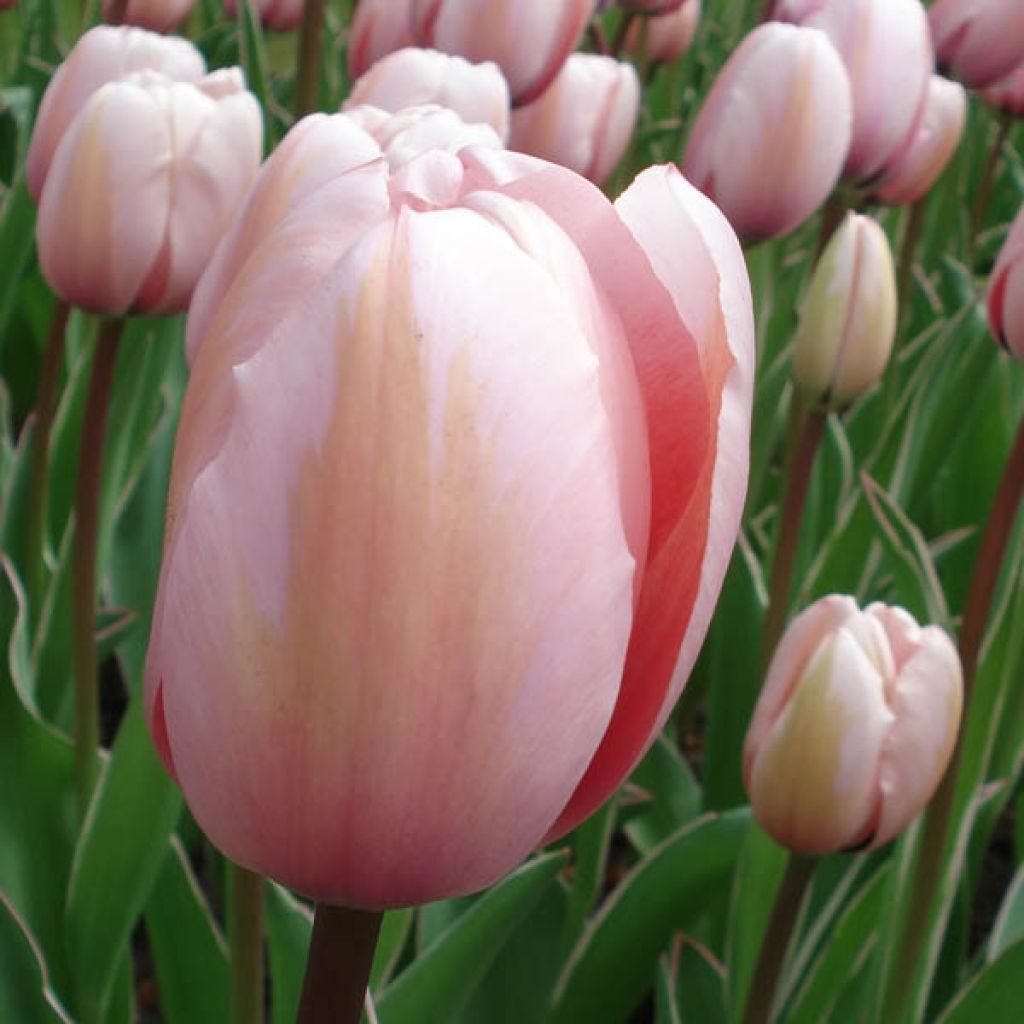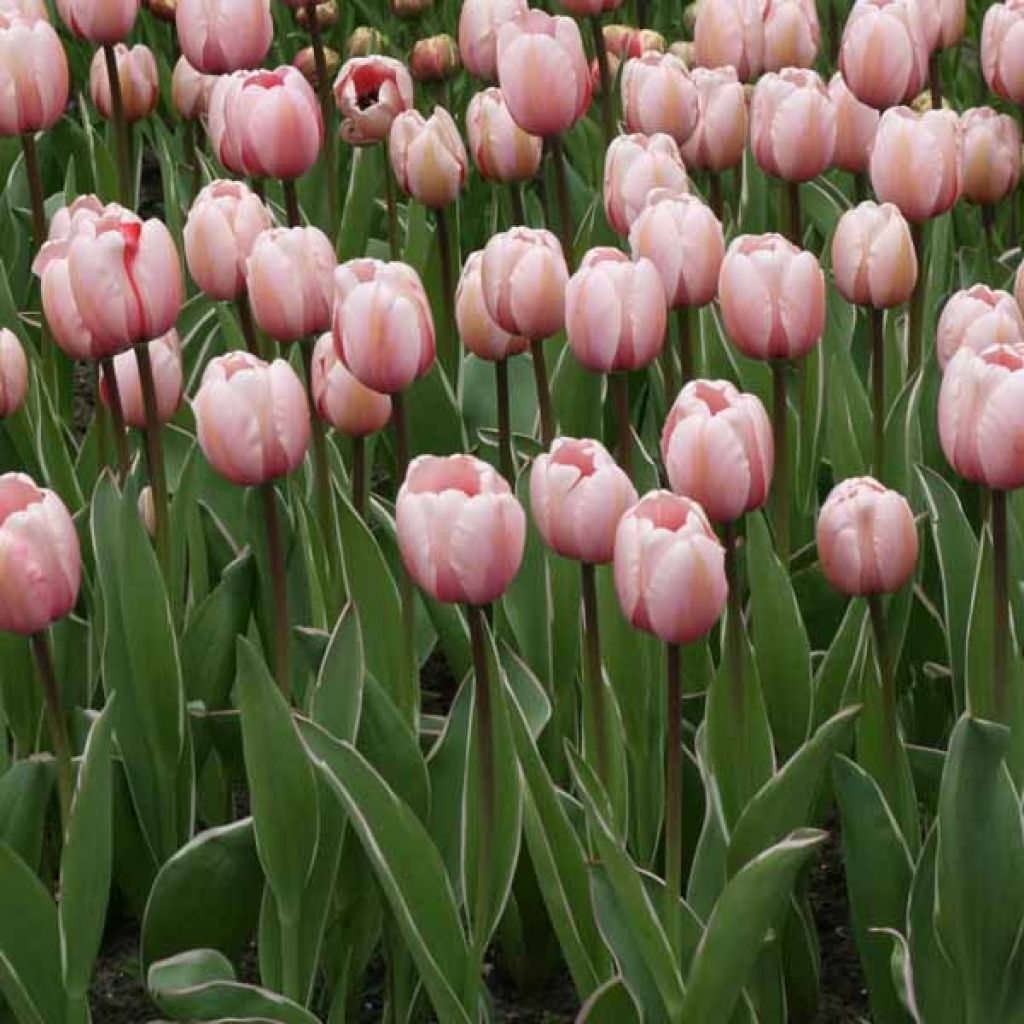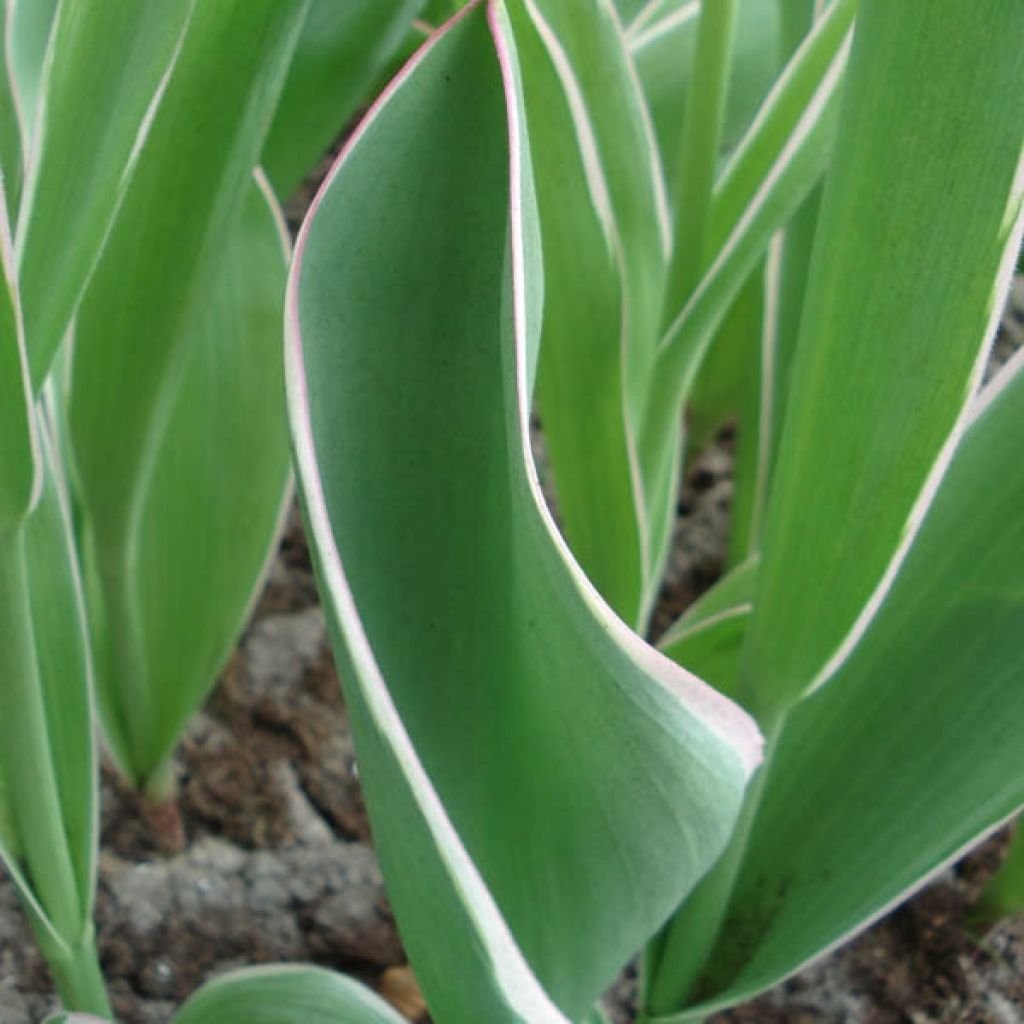

Tulipe Triomphe Salmon Impression


Tulipe Triomphe Salmon Impression


Tulipe Triomphe Salmon Impression
Tulipa Salmon Impression
Tulipa Darwin hybride Salmon Impression
Darwin Hybrid Tulip
Some of them did not develop during the pruning, a bit like peony tulips.
Maurice K., 06/05/2018
This plant carries a 6 months recovery warranty
More information
We guarantee the quality of our plants for a full growing cycle, and will replace at our expense any plant that fails to recover under normal climatic and planting conditions.
From €5.90 for pickup delivery and €6.90 for home delivery
Express home delivery from €8.90.

Does this plant fit my garden?
Set up your Plantfit profile →
Description
Tulipa 'Salmon Impression' has large marbled flowers, a divine shade of pink-mauve washed with salmon and apricot. A warmer pink glow illuminates the petals, with lighter edges. This late-flowering variety bears its flowers on top of tall and sturdy stems and faithfully reblooms each year. Ideal for borders or bouquets.
The 'Salmon Impression' Tulip belongs to the Liliaceae family. Originally horticultural, it is currently classified in the group of "Darwin Hybrid Tulips," which are known for their large flowers carried by sturdy stems and their perennial nature. Darwin Hybrid Tulips were created by crossing Fosteriana tulips with old Darwin hybrids, which are now part of the late single tulip class. This variety reaches a height of 50 cm (20in) when in bloom. The flowers, with a minimum diameter of 10 cm (4in), stand out in the garden above broadly lanceolate foliage in May, at the end of the tulip season.
Plant the bulbs in autumn, from September to December, at a depth of 15 cm (6in), 10 cm (4in) apart in ordinary, slightly acidic, neutral, or slightly alkaline, loose, well-tilled, and well-draining soil. Never add poorly decomposed manure or compost to the planting soil, as this could cause the bulbs to rot. The 'Salmon Impression' tulip will thrive in moist to dry soil, in a sunny or semi-shady location. After flowering, it is a good idea to remove the seed heads to prevent the plant from becoming exhausted.
Darwin hybrid tulips are popular for their rich colours and sturdy flowers in vibrant hues, suitable for borders and bouquets. They are among the most widely planted varieties, unmatched for adding flair to pots or sunny gardens. Remember to consider the height and flowering period when designing your borders, as these can vary significantly from one cultivar to another. It is a good idea to plant a few extra bulbs for beautiful long-lasting cut flowers.
About Botanical Species: Tulip species are found in most of the Old World, from Western Europe to China and Japan, including Eastern Europe, Asia Minor, and Central Asia. Their distribution range also includes North Africa and the Indian subcontinent. The centre of diversity for the genus is in the Pamir and Hindu Kush mountains and the steppes of Kazakhstan. There are various wild species, many of which are endangered. These include large tulips from cultivated fields, the most well-known being the Agen Tulip (Tulipa agenensis), and small tulips found in wooded areas or among rocks in the mountains. In cultivation, these are called "botanical tulips," and one of the most common is the wild tulip (Tulipa sylvestris), which often used to grow in the shelter of grapevines and whose subspecies australis is known as the southern tulip.
Report an error about the product description
Plant habit
Flowering
Foliage
Botanical data
Tulipa
Darwin hybride
Salmon Impression
Liliaceae
Darwin Hybrid Tulip
Cultivar or hybrid
Planting and care
Plant the bulbs in autumn, as soon as you receive them, from September to December, at a depth of 15 cm (6in), and 10 cm (4in) apart. They should be planted in ordinary, slightly acidic, neutral, or slightly chalky, loose, well-worked and well-drained soil. Never add manure or poorly decomposed compost to the planting soil, as this could cause the bulbs to rot. 'Salmon Impression' will thrive in moist to dry soil, in a sunny or partially shaded spot. Once flowering is over, it is best to remove the seed heads to avoid exhausting the plant.
Planting period
Intended location
Care
-
, onOrder confirmed
Reply from on Promesse de fleurs
Haven't found what you were looking for?
Hardiness is the lowest winter temperature a plant can endure without suffering serious damage or even dying. However, hardiness is affected by location (a sheltered area, such as a patio), protection (winter cover) and soil type (hardiness is improved by well-drained soil).

Photo Sharing Terms & Conditions
In order to encourage gardeners to interact and share their experiences, Promesse de fleurs offers various media enabling content to be uploaded onto its Site - in particular via the ‘Photo sharing’ module.
The User agrees to refrain from:
- Posting any content that is illegal, prejudicial, insulting, racist, inciteful to hatred, revisionist, contrary to public decency, that infringes on privacy or on the privacy rights of third parties, in particular the publicity rights of persons and goods, intellectual property rights, or the right to privacy.
- Submitting content on behalf of a third party;
- Impersonate the identity of a third party and/or publish any personal information about a third party;
In general, the User undertakes to refrain from any unethical behaviour.
All Content (in particular text, comments, files, images, photos, videos, creative works, etc.), which may be subject to property or intellectual property rights, image or other private rights, shall remain the property of the User, subject to the limited rights granted by the terms of the licence granted by Promesse de fleurs as stated below. Users are at liberty to publish or not to publish such Content on the Site, notably via the ‘Photo Sharing’ facility, and accept that this Content shall be made public and freely accessible, notably on the Internet.
Users further acknowledge, undertake to have ,and guarantee that they hold all necessary rights and permissions to publish such material on the Site, in particular with regard to the legislation in force pertaining to any privacy, property, intellectual property, image, or contractual rights, or rights of any other nature. By publishing such Content on the Site, Users acknowledge accepting full liability as publishers of the Content within the meaning of the law, and grant Promesse de fleurs, free of charge, an inclusive, worldwide licence for the said Content for the entire duration of its publication, including all reproduction, representation, up/downloading, displaying, performing, transmission, and storage rights.
Users also grant permission for their name to be linked to the Content and accept that this link may not always be made available.
By engaging in posting material, Users consent to their Content becoming automatically accessible on the Internet, in particular on other sites and/or blogs and/or web pages of the Promesse de fleurs site, including in particular social pages and the Promesse de fleurs catalogue.
Users may secure the removal of entrusted content free of charge by issuing a simple request via our contact form.
The flowering period indicated on our website applies to countries and regions located in USDA zone 8 (France, the United Kingdom, Ireland, the Netherlands, etc.)
It will vary according to where you live:
- In zones 9 to 10 (Italy, Spain, Greece, etc.), flowering will occur about 2 to 4 weeks earlier.
- In zones 6 to 7 (Germany, Poland, Slovenia, and lower mountainous regions), flowering will be delayed by 2 to 3 weeks.
- In zone 5 (Central Europe, Scandinavia), blooming will be delayed by 3 to 5 weeks.
In temperate climates, pruning of spring-flowering shrubs (forsythia, spireas, etc.) should be done just after flowering.
Pruning of summer-flowering shrubs (Indian Lilac, Perovskia, etc.) can be done in winter or spring.
In cold regions as well as with frost-sensitive plants, avoid pruning too early when severe frosts may still occur.
The planting period indicated on our website applies to countries and regions located in USDA zone 8 (France, United Kingdom, Ireland, Netherlands).
It will vary according to where you live:
- In Mediterranean zones (Marseille, Madrid, Milan, etc.), autumn and winter are the best planting periods.
- In continental zones (Strasbourg, Munich, Vienna, etc.), delay planting by 2 to 3 weeks in spring and bring it forward by 2 to 4 weeks in autumn.
- In mountainous regions (the Alps, Pyrenees, Carpathians, etc.), it is best to plant in late spring (May-June) or late summer (August-September).
The harvesting period indicated on our website applies to countries and regions in USDA zone 8 (France, England, Ireland, the Netherlands).
In colder areas (Scandinavia, Poland, Austria...) fruit and vegetable harvests are likely to be delayed by 3-4 weeks.
In warmer areas (Italy, Spain, Greece, etc.), harvesting will probably take place earlier, depending on weather conditions.
The sowing periods indicated on our website apply to countries and regions within USDA Zone 8 (France, UK, Ireland, Netherlands).
In colder areas (Scandinavia, Poland, Austria...), delay any outdoor sowing by 3-4 weeks, or sow under glass.
In warmer climes (Italy, Spain, Greece, etc.), bring outdoor sowing forward by a few weeks.


































